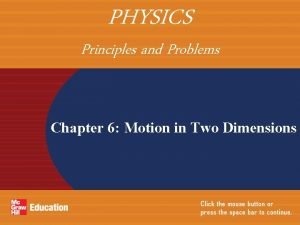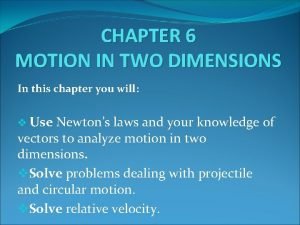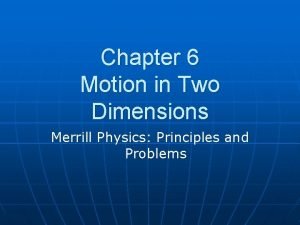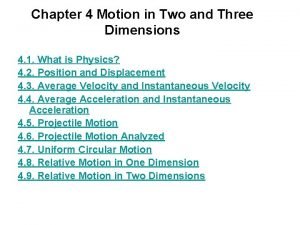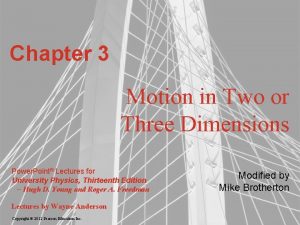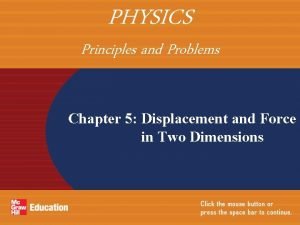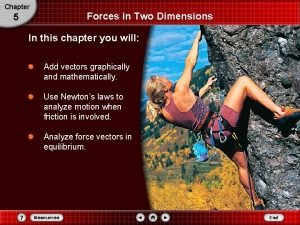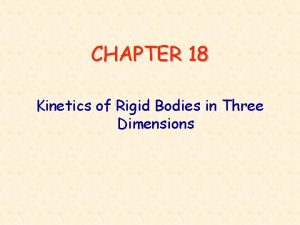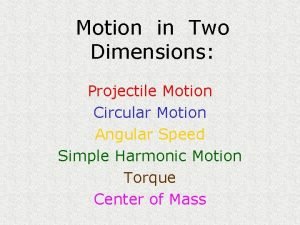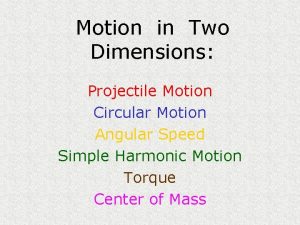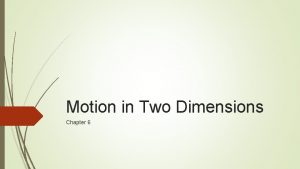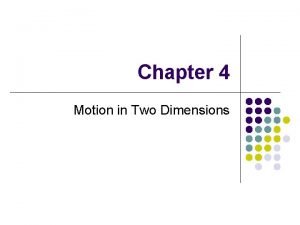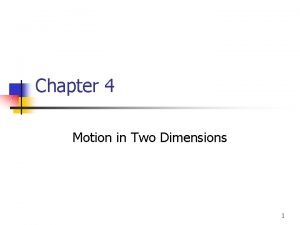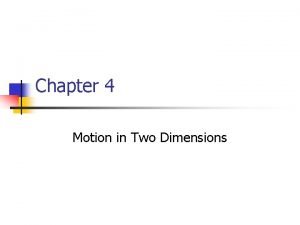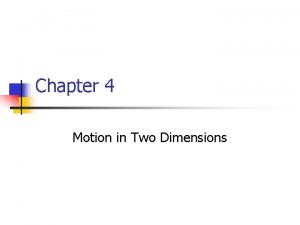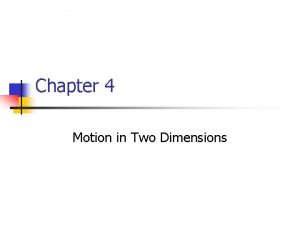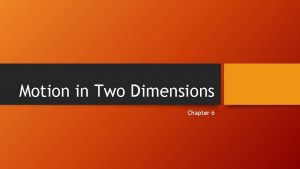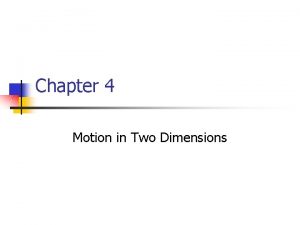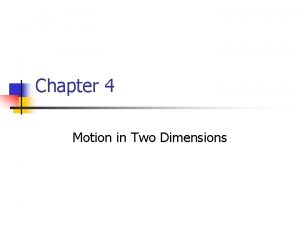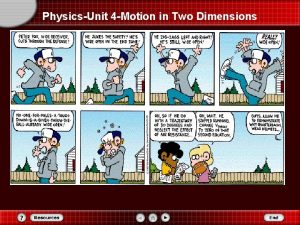Chapter 3 Motion in Two Dimensions August 28













- Slides: 13

Chapter 3 Motion in Two Dimensions August 28 Vector addition 3. 1 Components of Motion An object moving on a plane can be located using two numbers — the x and y coordinates of its position. Similarly, its velocity can be described using components along the x- and y -axes. The velocity components are The magnitude of the velocity vector is The direction of motion is Sometimes we may need depending on how q is defined. This method of finding components and magnitude applies to any vector, e. g. , displacement, velocity, acceleration, force, etc. 1

Kinematic equations for components of motion: When solving two-dimensional kinematics problems, the x- and y-components are calculated separately. For motion in a plane with constant acceleration If the acceleration is not parallel to the velocity, the object will undergo curvilinear motion. Example 3. 2 A Curving Path: Vector Components. Here the acceleration is only in the y direction, so vy increases with time, while vx remains constant. 2

3. 2 Vector Addition and Subtraction Geometric method of vector addition: triangle method First draw A. Next draw B with its tail starting at the tip of A. The vector from the tail of A to the tip of B is the resultant sum vector R=A+B. This tip-to-tail method can be extended to R=A+B+C+. . . Vector subtraction: Vector subtraction is a special case of vector addition: A − B = A+ (− B ), where − B has the same magnitude as B, but is in the opposite direction. Vector components: A vector can be resolved into its rectangular components: The component form of the vector is Here q are unit vectors. 3

Vector addition using components: Vectors can be analytically added by using their components: 1) Resolve each vector into its x- and y- components. They may be negative. 2) Add all the x- and y- components separately. 3) Recombine the added components to get the resultant vector. 4

Example 3. 3: Applying the Analytical Component Method: Separating and Combining x- and y-Components 5

Read: Ch 3: 1 -2 Homework: Ch 3: E 5, 29 Due: September 6 6

August 30 Projectile motion 3. 2 Projectile Motion Horizontal projections: An object projected horizontally has an initial velocity in the horizontal direction, and acceleration due to gravity in the vertical direction. Because the x- and y-components of motion can be treated separately, the time it takes to reach the ground is the same as if it were a dropped object falling vertically. The relative equations are 7

Projection at an angle: A projectile launched in an arbitrary direction may have initial velocity components in both the horizontal and vertical directions, but its acceleration is still downward. The vertical motion is the same as if the object were thrown straight up or down with the same initial y velocity, and the horizontal velocity is constant. The initial velocity has the components The relative equations are The path of motion (trajectory) of the projectile is called a parabola. 8

Time of flight, maximum height and range: Range is the maximum horizontal distance travelled by the projectile. The range of a projectile is maximum (without air resistance) for a launch angle of 45°. It is equal for angles equally different from 45°. 9

Read: Ch 3: 3 Homework: Ch 3: E 46, 48 Due: September 6 10

September 3 Projectile motion - examples Example 3. 5: Starting at the Top: Horizontal Projection Example 3. 6: Teeing Off: Projection at an Angle Example 3. 7: A Throw from the Bridge 11

Example 3. 8: Which Has the Greater Speed? 12

Read: Ch 3: 3 Homework: Ch 3: E 54, 61 Due: September 13 13
 Chapter 6 assessment physics
Chapter 6 assessment physics A 45-kg merry-go-round worker
A 45-kg merry-go-round worker Chapter 6 motion in two dimensions
Chapter 6 motion in two dimensions Chapter 6 motion in two dimensions
Chapter 6 motion in two dimensions Motion in two and three dimensions
Motion in two and three dimensions Motion in two or three dimensions
Motion in two or three dimensions Vectors quick check
Vectors quick check Motion in two dimensions quick check
Motion in two dimensions quick check 5 displacement and force in two dimensions
5 displacement and force in two dimensions Chapter 5 forces in two dimensions study guide answers
Chapter 5 forces in two dimensions study guide answers Chapter 2 motion section 1 describing motion answer key
Chapter 2 motion section 1 describing motion answer key Chapter 2 motion section 1 describing motion answer key
Chapter 2 motion section 1 describing motion answer key Chapter 2 motion section 1 describing motion answer key
Chapter 2 motion section 1 describing motion answer key Kinetics of rigid bodies
Kinetics of rigid bodies
